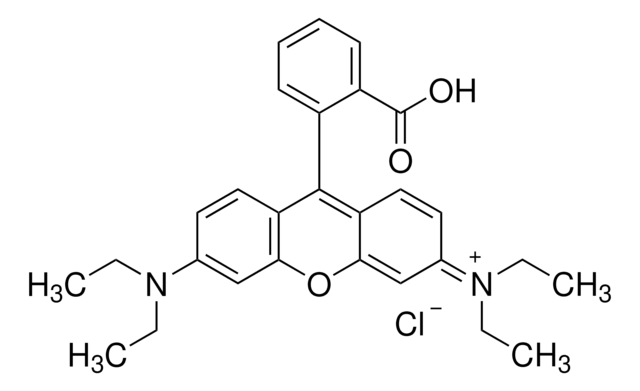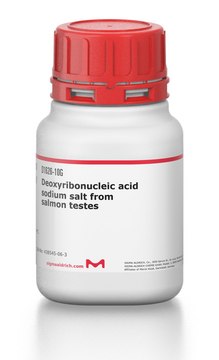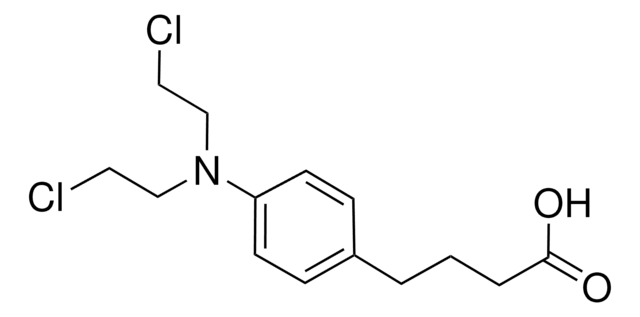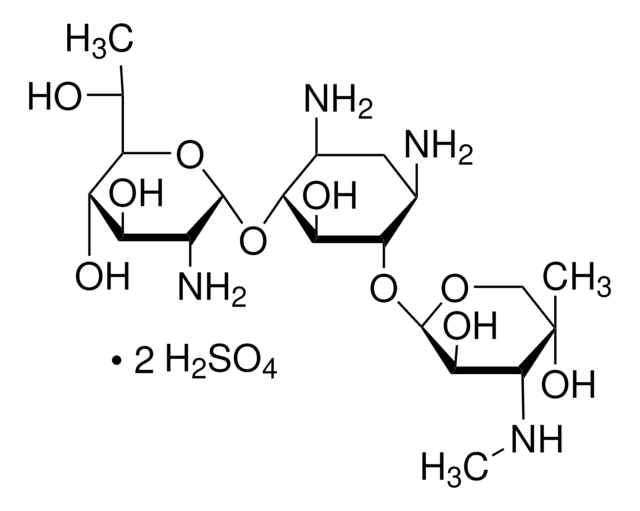所有图片(1)
别名:
2,2′-Disulfanediylbis(N-(4-sulfamoylphenyl)benzamide, 2,2′-Dithiobis[N-[4-(aminosulfonyl)phenyl]benzamide], NSC 654077, PD022551
经验公式(希尔记法):
C26H22N4O6S4
推荐产品
质量水平
检测方案
≥97% (NMR)
形式
powder
颜色
white to light brown
溶解性
DMSO: 2 mg/mL, clear
储存温度
room temp
InChI
1S/C26H22N4O6S4/c27-39(33,34)19-13-9-17(10-14-19)29-25(31)21-5-1-3-7-23(21)37-38-24-8-4-2-6-22(24)26(32)30-18-11-15-20(16-12-18)40(28,35)36/h1-16H,(H,29,31)(H,30,32)(H2,27,33,34)(H2,28,35,36)
InChI key
FVGJPHFQQMQGFQ-UHFFFAOYSA-N
生化/生理作用
DIBA-1 (2,2′-dithiobisbenzamide-1) is a disulfide that interacts with zinc fingers as a zinc ejector. It has been shown to interact with many zinc finger containing proteins, including HIV-1 nucleocapsid and the estrogen receptor. DIBA-1 has been studied as a candidate for the treatment of AIDS and also breast cancer. In one study DIBA restored tamoxifen sensitivity in resistant breast cancer.
WGK
WGK 3
闪点(°F)
Not applicable
闪点(°C)
Not applicable
Li Hua Wang et al.
Cancer cell, 10(6), 487-499 (2006-12-13)
A serious obstacle to successful treatment of estrogen receptor (ER)-positive human breast cancer is cell resistance to tamoxifen (TAM) therapy. Here we show that the electrophile disulfide benzamide (DIBA), an ER zinc finger inhibitor, blocks ligand-dependent and -independent cell growth
Kevin Carayon et al.
Nucleic acids research, 38(11), 3692-3708 (2010-02-19)
HIV-1 integrase catalyzes the insertion of the viral genome into chromosomal DNA. We characterized the structural determinants of the 3'-processing reaction specificity--the first reaction of the integration process--at the DNA-binding level. We found that the integrase N-terminal domain, containing a
M Huang et al.
Journal of medicinal chemistry, 41(9), 1371-1381 (1998-05-23)
Agents that target the two highly conserved Zn fingers of the human immunodeficiency virus (HIV) nucleocapsid p7 (NCp7) protein are under development as antivirals. These agents covalently modify Zn-coordinating cysteine thiolates of the fingers, causing Zn ejection, loss of native
我们的科学家团队拥有各种研究领域经验,包括生命科学、材料科学、化学合成、色谱、分析及许多其他领域.
联系技术服务部门







